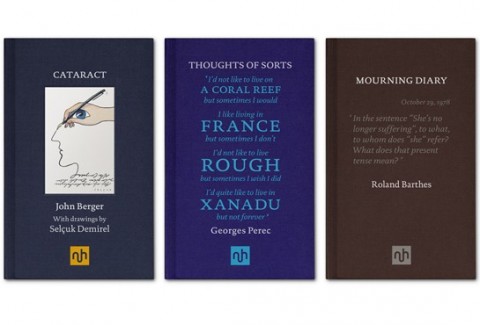
And The Moral Is Don’t Fuck William Faulkner… A really great post by Glen David Gold, author of Sunnyside and Carter Beats the Devil, at the LA Review Books:
The world after publication is — beyond its many joys — an evaporating and ruinous goldfish bowl of thwarted ambition. If you write long enough, you will know editors and agents. You will have dinner with people who give interesting fellowships to weeklong retreats in the south of France. You will teach at good programs and you might know when a publisher’s child is having a birthday and what his favorite Transformer is, and these facts more than the quality of your humanity might be what makes you a chess piece when another writer slaps you on the back and asks you if you might read something he wrote.
Very Long, Very Tricky, Very Strange — Adam Gopnik in The New Yorker on the appeal of Tolkien and fantasy novels:
Of all the unexpected things in contemporary literature, this is among the oddest: that kids have an inordinate appetite for very long, very tricky, very strange books about places that don’t exist, fights that never happened, all set against the sort of medieval background that Mark Twain thought he had discredited with “A Connecticut Yankee in King Arthur’s Court.”
Against Bigness — Mark Edmundson on the movies of Robert Altman and Woody Allen at The American Scholar:
Altman was against bigness. He always wanted to turn the carpet over. He wanted you to see the signs of strain and stress that went into the making of what looked like a serene, well-balanced thing. But he didn’t want to debunk the whole construction; he simply wanted to marvel at the quirky congestion of threads. It was probably tough for the players who acted prominently in his movies to redeem their Hollywood standing. He turned stars into hand-held sparklers. He waved them around. But he did it without resentment, without meanness: he simply liked them better that way.
Meanwhile in the comics corner…
Alan Moore talks to Fast Company about a Kickstarter project to build a memorial to the late Harvey Pekar in Cleveland Heights public library, and to The Guardian about the Occupy Movement wearing V for Vendetta masks at protests.
And at The Daily Telegraph, Kasia Boddy reviews MetaMaus by Art Spiegelman:
The effect of this great assemblage is complicated. On the one hand, it consolidates Maus’s status as a canonical work, about which we need to know everything, and emphasises its claim to historical testimony (Spiegelman complained to The New York Times when Maus was included on the fiction bestseller list.) On the other hand, however, the almost overwhelming presence of all this stuff emphasises that history is far from a straightforward retrieval of “facts”, but rather involves a complex process of accumulation, sifting and construction.
And finally…
Martin Filler reviews the documentary Eames: The Architect and the Painter for NYRB:
Comments closedThe last time I saw Ray Eames, a few months before her death, I mentioned the high prices that the couple’s original furniture was fetching in New York galleries. “Oh, no,” she cried, and held her hands to her ears in genuine dismay. “We wanted our things be available to everyone, not just rich people.” Yet although the Eameses’ molded plywood LCW chair of 1946 at first retailed for $20.95, their rosewood-and-leather lounge and ottoman of 1956 cost a not-inconsiderable $578 when first introduced, and now, still in production by Herman Miller, sells for $4,499. This luxurious seating became a familiar component of upscale psychiatrists’ consultation rooms, as much an emblem of mid-century professional attainment as pairs of Ludwig Mies van der Rohe’e chrome-and-leather Barcelona chairs were in the reception areas of Fortune 500 companies.

 Notting Hill Editions
Notting Hill Editions